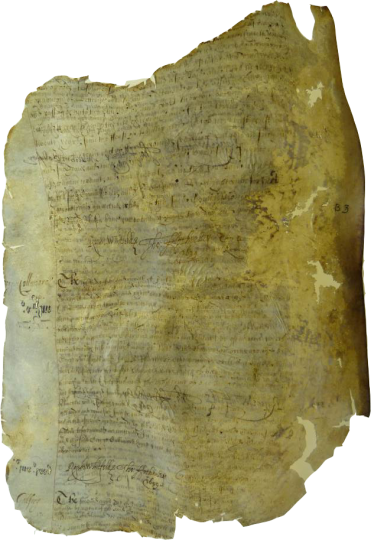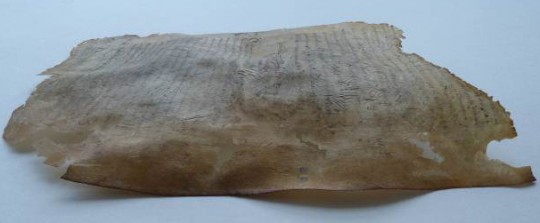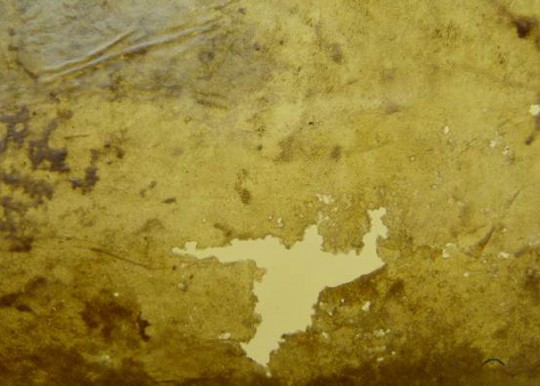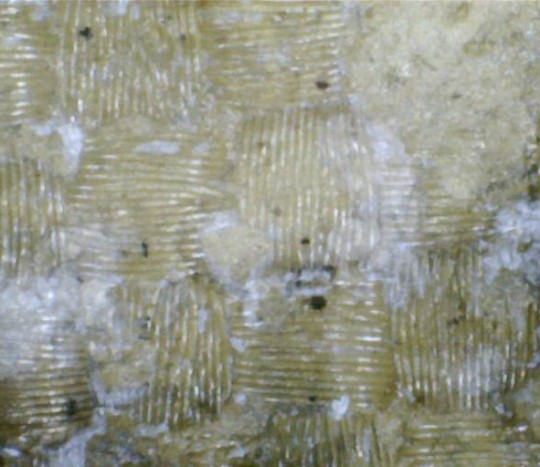Previous conservation treatments: learning from the past
Next » « PreviousTwenty-one of the sheets have had previous conservation treatment, for which there is no documentation of when the work was carried out, by whom, or what was done. However, we can get a few clues from the condition of the sheets.
The sheets still have some degree of planar distortion but are generally much flatter. Gelatinisation in some areas has also worsened.
Each sheet has a layer of adhesive on the surface and a mesh like pattern imprinted into it.
A fairly standard method used in the past for drying parchment under tension, was to paste it out with an adhesive (most likely wheat starch paste) onto Terylene (or a similar fabric) and leave it to air dry. This is the method that seems to have been used here. It seems likely that having been pasted out onto the Terylene, the sheets were then also pressed with a board with some weight on top. This can be seen through the combination of the transparency of much of the parchment, the imprint of the Terylene weave into the surface, and in some cases some very deep, but very flat creases.
Compared to the untreated sheets this sheet shows more gelatinisation, which is probably caused by the treatment that was carried out. This previous intervention has led to further denaturing of the parchment with an increase in gelatinisation. The parchment is physically less stable now than it was before treatment.





How will you decide which methods, going forward, will be effective and safe?
We have been testing various treatment options (details will be in our next blog) on similarly damaged parchment samples to see how effective different treatments will be. Current research shows that any introduction of water (to parchment this deteriorated) can cause further deterioration in the long run, but this is necessary to facilitate opening of the creases. Therefore with the tests we are carrying out we hope to find the most effective methods for introducing very small amounts of moisture, which will then allow the creases to be opened.